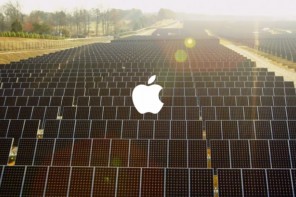The 16th United Nations Climate Change Conference (COP16) was held in Cancun, Mexico, from November 29 – December 10. This year, the stakes are high. Over 9,000 delegates, world leaders and political groups from 190 countries gathered to find ways to mitigate the devastating effects of climate change on our planet and work towards a legally binding agreement between countries.
“The beauty of the surroundings in which we are working cannot hide the fact that the stakes at this particular conference are very high. The political stakes are high because the effectiveness and credibility of your multilateral intergovernmental process are in danger. And the environmental stakes are high because we are quickly running out of time to safeguard our future,” said Christiana Figueres, Executive Secretary of the UNFCCC.
“In the arena of climate change, the list of vulnerable nations is long, and growing. Tuvalu, Maldives, Kiribati, Vanuatu are looking for ways to evacuate their entire population because of salt water intrusion and rising sea levels. Sooner rather than later, island nations will have to seek refuge in other, higher lying countries,” said Figueres.
2010 tops warmest years
According to a presentation given by the World Meteorological Organisation (WMO) at COP16, 2010 is likely to rank in the top 3 warmest years since the beginning of instrumental climate records in 1850. Figueres cited the floods that devastated Pakistan, Venezuela and Colombia, the wildfires that gripped Russia and the hottest summers to date in Japan and China during 2010 as wake-up calls to the world. According to the WMO, the global combined sea surface and land surface air temperature for 2010 (January-October) is currently estimated at 0.55°C ± 0.11°C1 (0.99°F ± 0.20°F) above the 1961-1990 annual average of 14.00°C/57.2°F. At present, 2010’s nominal value is the highest on record, just ahead of 1998 (January-October anomaly +0.53°C) and 2005 (0.52°C).
The Cancun Agreements
After the strenuous talks and negotiations, the Cancun meetings concluded an informal plenary session (where all the countries meet in a single room) and more than 190 countries adopted a compromise deal that guides the way towards a new system for climate diplomacy. The new agreement envision eventual rules for managing CO2 emissions and reiterates a promise made by industrial countries in Copenhagen during COP15 for US$30-billion in “fast start” money over the next two years to help the vulnerable and poor countries to combat climate change.
Also included in the Cancun Agreements are plans to prevent the cutting and burning of tropical forests (which accounts for up to 15% of the world’s carbon dioxide emissions).
The Cancun Agreements “mark a new era in international cooperation on climate change,” said Mexican Foreign Minister Patricia Espinosa.
Reactions towards the Cancun Agreements, aren’t favoured by all, with US Spokesperson of environmental group Friends of the Earth, Nick Berning, saying that the “texts fall radically short on the crucial question – curbing climate pollution. The failure to make strict commitments to reducing greenhouse gases could lead to a future in which temperatures rise by up to 9 degrees Fahrenheit,” said Berning.
Progress made at COP16
During the climate change negotiations, World Bank president Robert Zoellick helped to launch a number of climate change initiatives, including a new multi-million dollar fund to support development country domestic carbon trading systems.
Some of the other initiatives launched by the World Bank at COP16 include new initiative to boost access to renewable energy by climate vulnerable island states; and an international “roadmap” for action on how agriculture can achieve the “triple win” of increased food productivity, reduced greenhouse gas emissions, and enhanced resilience to climate change.
“We know that the poorest countries will suffer the earliest and the most from climate change. They will bear the brunt of changing weather patterns, water shortages, and rising sea levels even though they are the least equipped to deal with them,” said Zoellick.
“We also know that, while these countries would like to see a comprehensive global accord on climate change, they are not waiting for one. They are acting now and acting differently to shift from being climate vulnerable to being climate smart. We are fully engaged and have been ramping up our efforts with countries as they put in place practical, effective solutions leading to low-carbon growth and inclusive efforts to overcome poverty,” added Zoellick.
Zoellick noted that four out of five of the World Bank Group’s client countries have now made climate change among key priorities for their anti-poverty plans. In 1990, about 10% of countries included climate change in their development plans – that number has grown to over 80%.
The joint World Bank/Regional Development Bank Climate Investment Funds, have seen $6,4-billion pledged, with $4,2-billion in investment plans already endorsed to support more than $40-billion in clean technology projects, as well as extensive pilot projects on resilience, a programme on renewable energy for the poor, and a forest investment programme.
Who will be footing the bill?
In November, 259 global investors representing US$15-trillion in investments issued a statement on climate change urging international action. According to UNFCCC, about 85% of the financing needed to tackle climate change must come from the private sector. In a statement released by the WWF, there is an urgent need to scale up on the levels of both public and private financing to halt the devastating effects of climate change and enable low-carbon development in emerging and vulnerable countries.
“Public funds are critical to speed up the development of new technologies, as well as for adaptation, resilience building, and preparedness and capacity building measures. Public funds are also critical in leveraging private sector finance, which needs to contribute the great majority of the investments needed in clean energy technologies. Our experience is that public investment and initiatives play key roles in leveraging and directing private investment,” said Yolanda Kakabadse, President of WWF International.
Mark Fulton, co-chair of the UNEP Finance Initiative Climate Change Working Group and global head of Climate Change Investment Research at Deutsche Bank Asset Management, said that public finance from international sources will be needed to manage risks for investors and create the capacity in developing countries to attract and channel private finance into the green, low carbon economy.
“Private finance for low-carbon endeavors in developing countries can and will only flow at the needed scale, if firstly, the risk-return profile of such investments is competitive with that of conventional investments and, secondly, if domestic policy frameworks on the ground display transparency, longevity and certainty,” said Fulton.
“A solid response to climate change demands nothing less than putting international climate policy firmly back on track. You can only do that by moving beyond the boundaries of short-term national interests to converge in that space which is common to all of us, that space where we are all human beings dependent on the well-being of this now fragile planet, and where we are all jointly accountable to future generations. And you can reach that space only through conciliation with each other now,” said Figueres.






